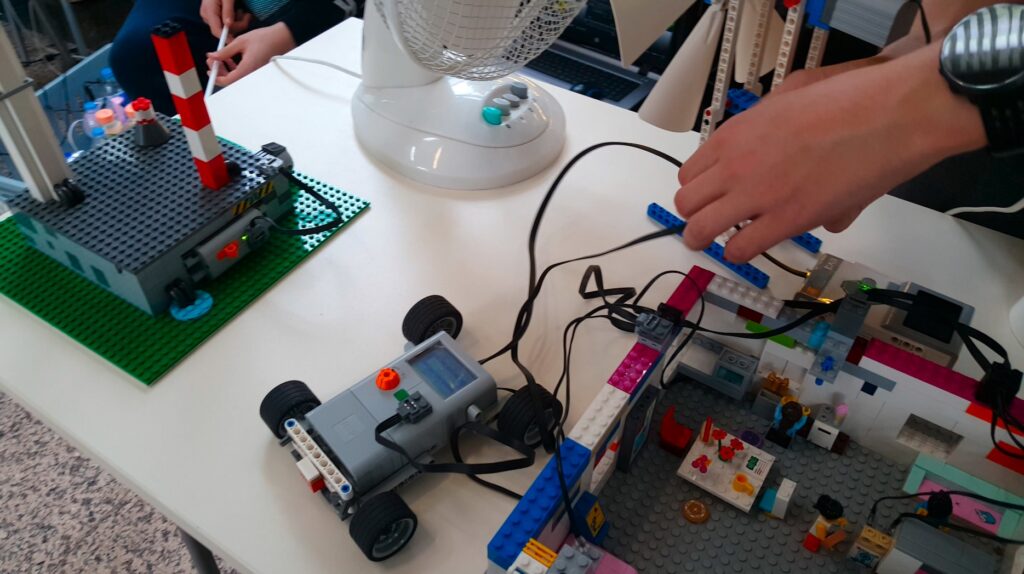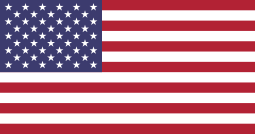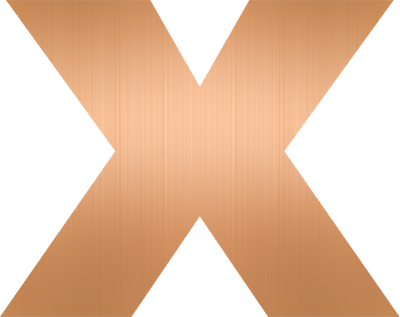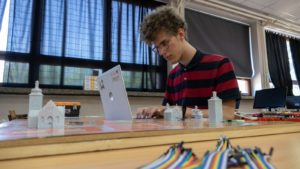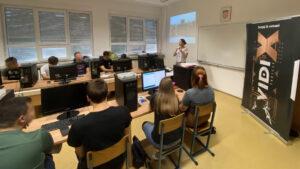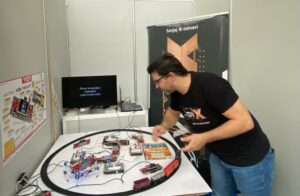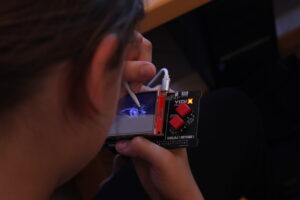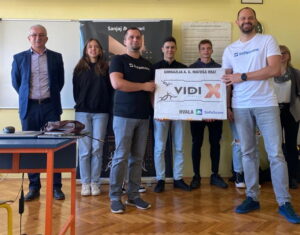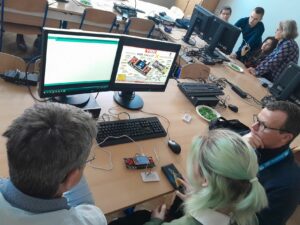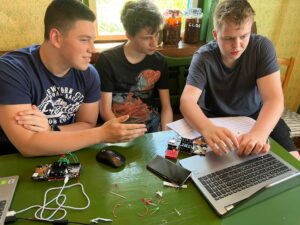On February 18, 2023, the Croatian Robotics Association organized the seventh consecutive FIRST LEGO League competition for children aged 9 to 16 at the Faculty of Electronics and Computer Science in Zagreb.This year’s competition witnessed a record number of registered teams, highlighting the growing appeal of the event among elementary school students who seek to showcase their acquired STEM skills.
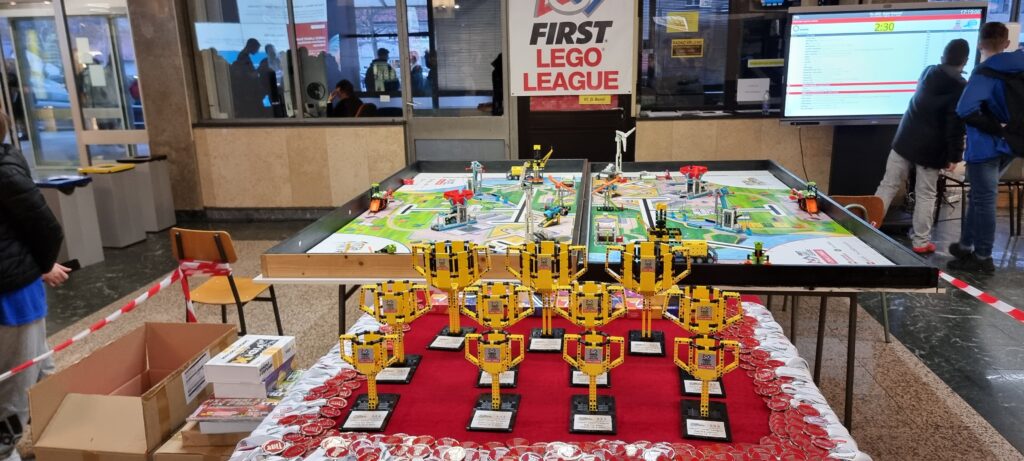
The competition has a certain theme every year, with this year’s being “SuperPowered” electricity. The goal of this year’s theme was to inspire young participants to explore and understand the journey of energy, from its various sources to storage, transmission, and consumption in everyday life.

The competition attracted a total of 250 young researchers and potential future scientists, organized into 28 teams from different regions of the Republic of Croatia.

The competition comprised four stages, where each team had to showcase their skills and innovative abilities. Additionally, one of the scoring categories was the most visually appealing booth.
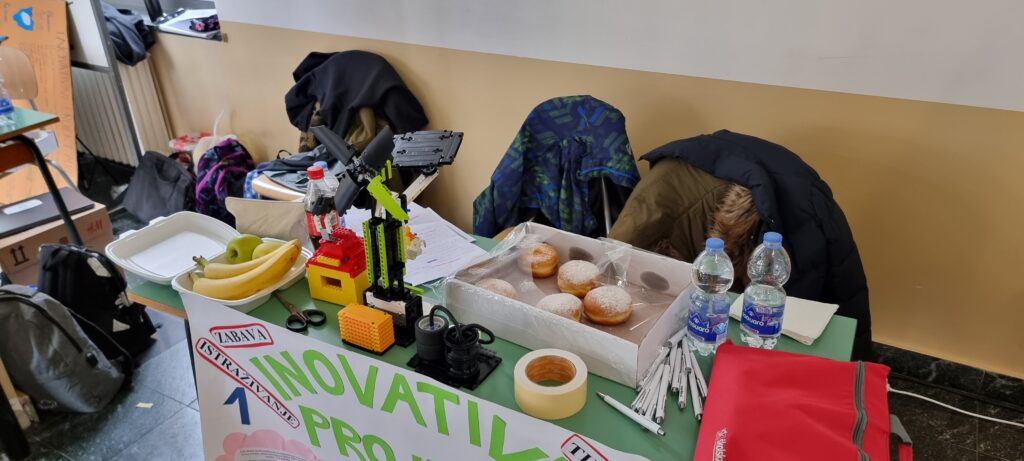
The competitors showcased their projects with enthusiasm and made determined efforts to capture the attention of the evaluators and fellow participants. . Apart from aiming for victory, the objective, as envisioned by the organizers, was to have fun and discover innovative solutions in the fields of energy efficiency and environmental protection.
In addition to research, conceptualization, and presentation skills, the participants had to demonstrate their proficiency in assembling and programming a Lego robot capable of effectively accomplishing various tasks.
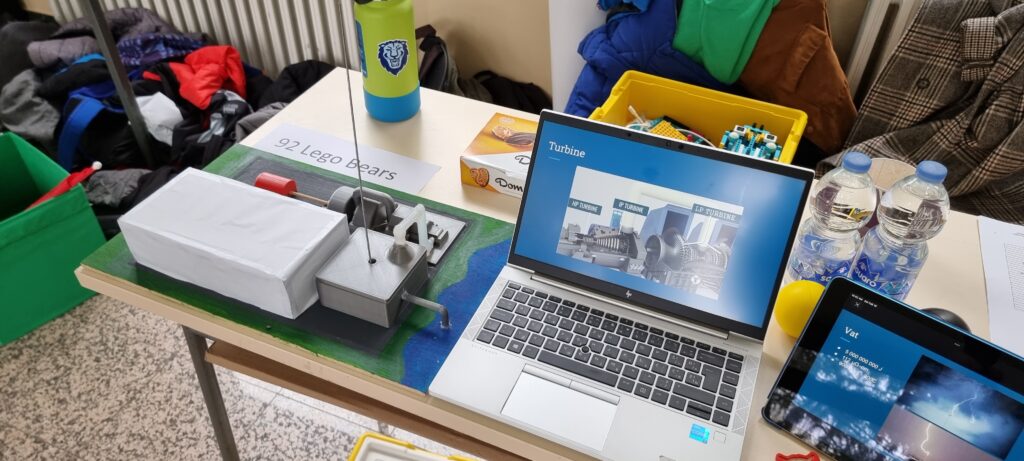
Each team arrived with their own either smaller or larger robot and had to complete the assigned tasks within a tight timeframe of just two minutes. Each task carried a specific number of points, requiring the teams to strategically choose which tasks their robot would execute and which ones they should skip. The ultimate strategy was to accumulate as many points as possible within the time given.
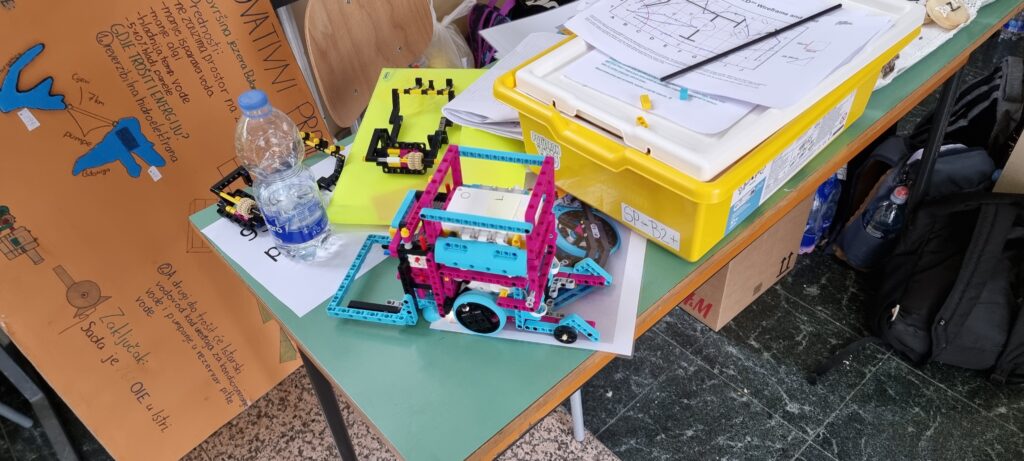
Some of the projects exhibited were:
Smart Window Controller – an automated window mechanism designed to open and close based on the room’s cooling or heating systems. Its purpose is to optimize energy consumption, making it an energy-saving solution.
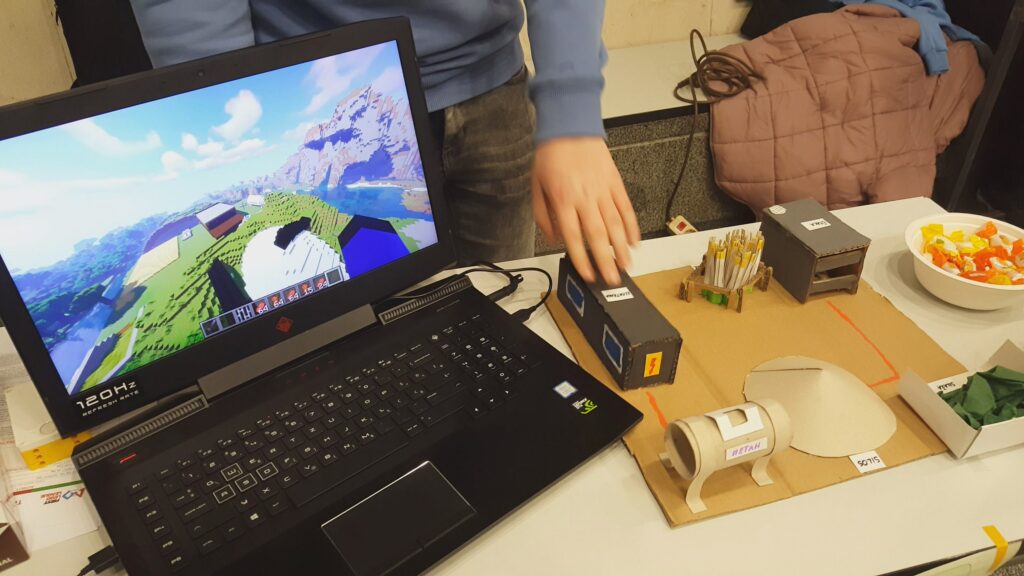
The team from Vladimir Nazor Elementary School showcased a concept of a fully environmentally friendly farm. This innovative farm collects methane gas from the barn and stores it in tanks. The collected methane is then sent to a power plant for electricity generation. Alongside a cardboard model, the team also created a virtual model of the farm within the Minecraft game.
Tim WeEnergy prezentirali su ideju koja iskorištava energiju rijeke kako bi ju iskoristili za proizvodnju električne energije. The WeEnergy team introduced a concept that harnesses the power of rivers to produce electricity. Their idea involves placing rotor-like machines on platforms anchored to the coastline. This design makes it possible to move machines out of the way to allow larger ships to pass. The team believes that rivers can be utilized more efficiently and cost-effectively without the need for expensive installations.
The Gubex Enterprise team from Zagreb developed the Battery Box project, a container for battery disposal combined with a poll. The poll focuses on commonly debated questions that often elicit polarized responses. The concept behind the Battery Box is that people can bring their used batteries and dispose of them by dropping them into the portion of the box that corresponds with their opinion. Currently, the poll question that is being voted on is: “What comes first: milk or cereal?”
Placement at 2023 FLL
In order for the teams to advance to the next round of the competition, they had to show excellent results in all four categories that brought the same number of points, namely: core values, project, technical interview and robot game. The following teams were selected to travel to the Adria region finals in Ljubljana, Slovenia, on March 18, 2023: 3. 2023. 2023:
Bit Kids 101, Udruga Bit Kids 101, Fažana
CyberLOOP, Udruga za robotiku i programiranje Loop, Podstrana
Gubex Enterprise, Matija Gubec Primary School, Zagreb
Krash test, Udruga Gradionica, Zagreb
Regoč, Ivana Brlić Mažuranić Primary School, Prigorje Brdovečko
Robertovi mehaničari, Klub tehničke kulture Lipovljani
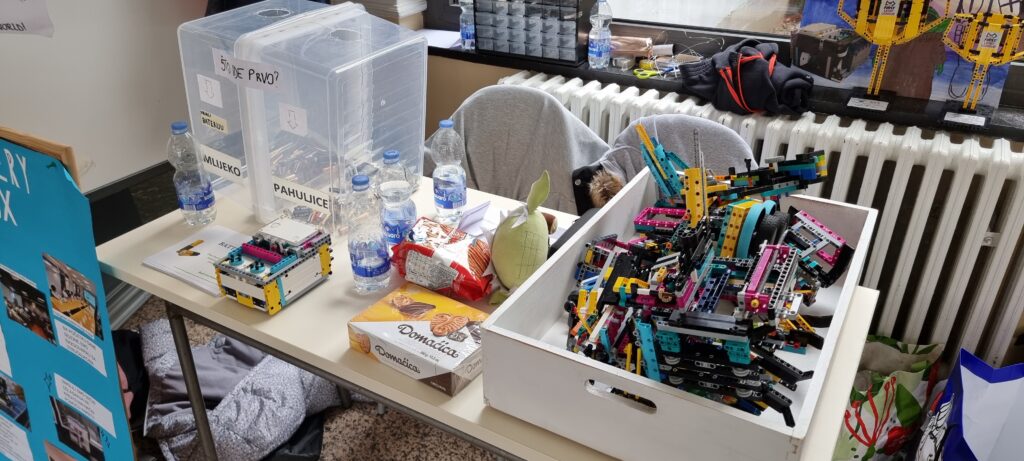
One of these selected teams, with the best result in Slovenia, will have the opportunity to travel to the world competition in Morocco.
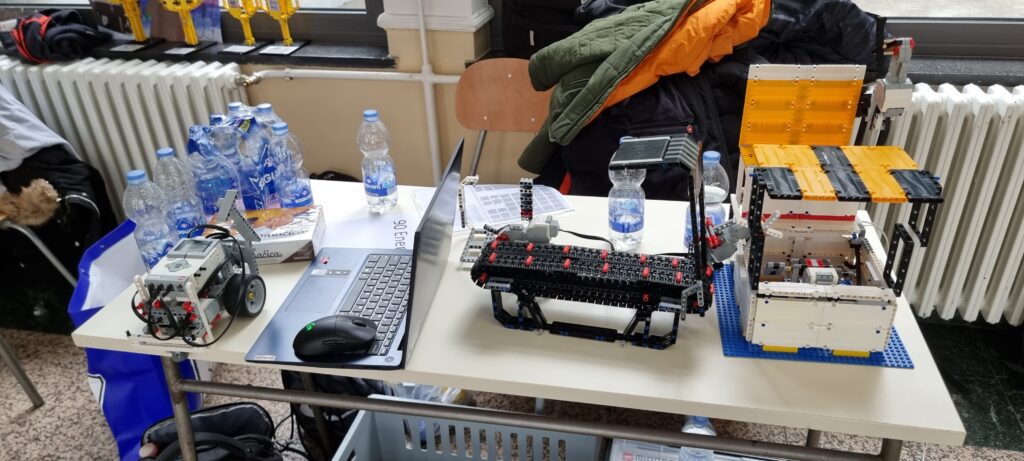
The winners of the other awards at the seventh national FIRST LEGO League were:
Best FLL mentor: Krešo Dalenjak and Ivana Grabar, Robertovi mehaničari, Klub tehničke kulture Lipovljani
Best FLL booth: DecaCore, Ivo Andrić Primary School, Zagreb
Best FLL Fun Team: Robonada, Centar za tehnološki razvoj i STEM obrazovanje Pozitron / Jože Šuran Višnjan Primary School – Vižinada District School
RoboMove of the Day: WEnergy, Udruga Locus, Vinkovci
Robot game: Krash test, Udruga Gradionica, Zagreb
Technical interview: Lego Bears, American International School of Zagreb, Zagreb
Project: Veliki, Informatički klub VEL_IK, Velika Gorica
Core values: CyberLOOP, Udruga za robotiku i programiranje Loop, Podstrana
The three best teams in the overall standings were:
3rd prize: Gubex Enterprise, Matija Gubec Primary School, Zagreb
2nd prize: Regoč, Ivana Brlić Mažuranić Primary School, Prigorje Brdovečko
1st prize: Krash test, Udruga Gradionica, Zagreb

VIDI X in the hands of the winners! The first prize not only grants the winning team the opportunity to compete in the Adria region finals, but also includes prizes from other sponsors, one of them of course being the sought after VIDI X microcomputer.
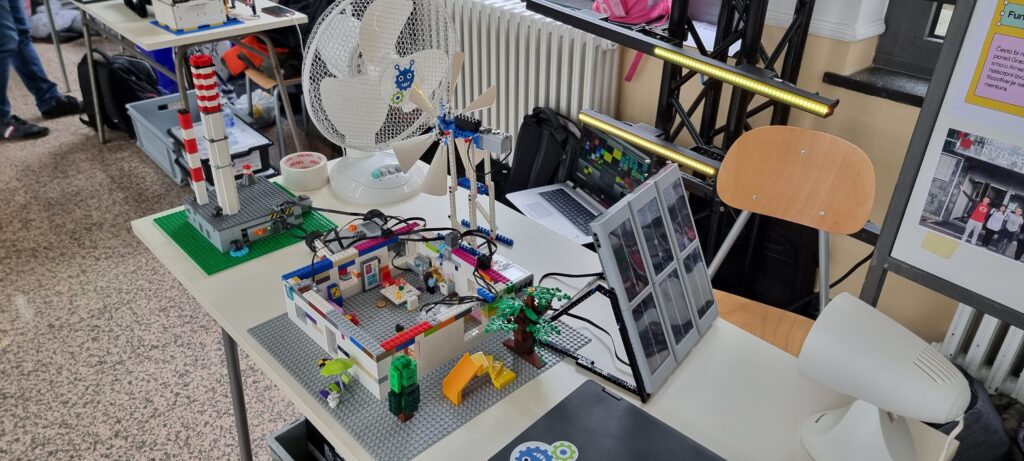
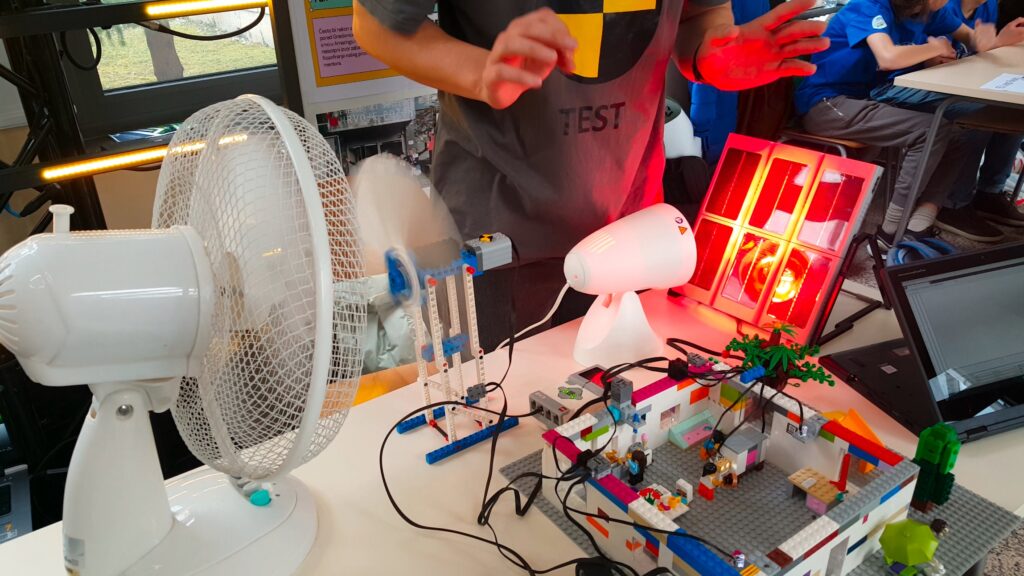
The winning team, Krash Test from Zagreb, excelled in the challenges with their Lego robot, accumulating a total of 300 points.
The presentation project by the Krash Test team revolves around a solution for utilizing wind and solar energy in households. Any excess energy generated is stored in the electric car’s batteries, ensuring its availability for the household during periods when there is insufficient wind or sunlight to produce electricity. Any surplus energy that remains unused could be transferred with the electric car to a power plant for further distribution.
